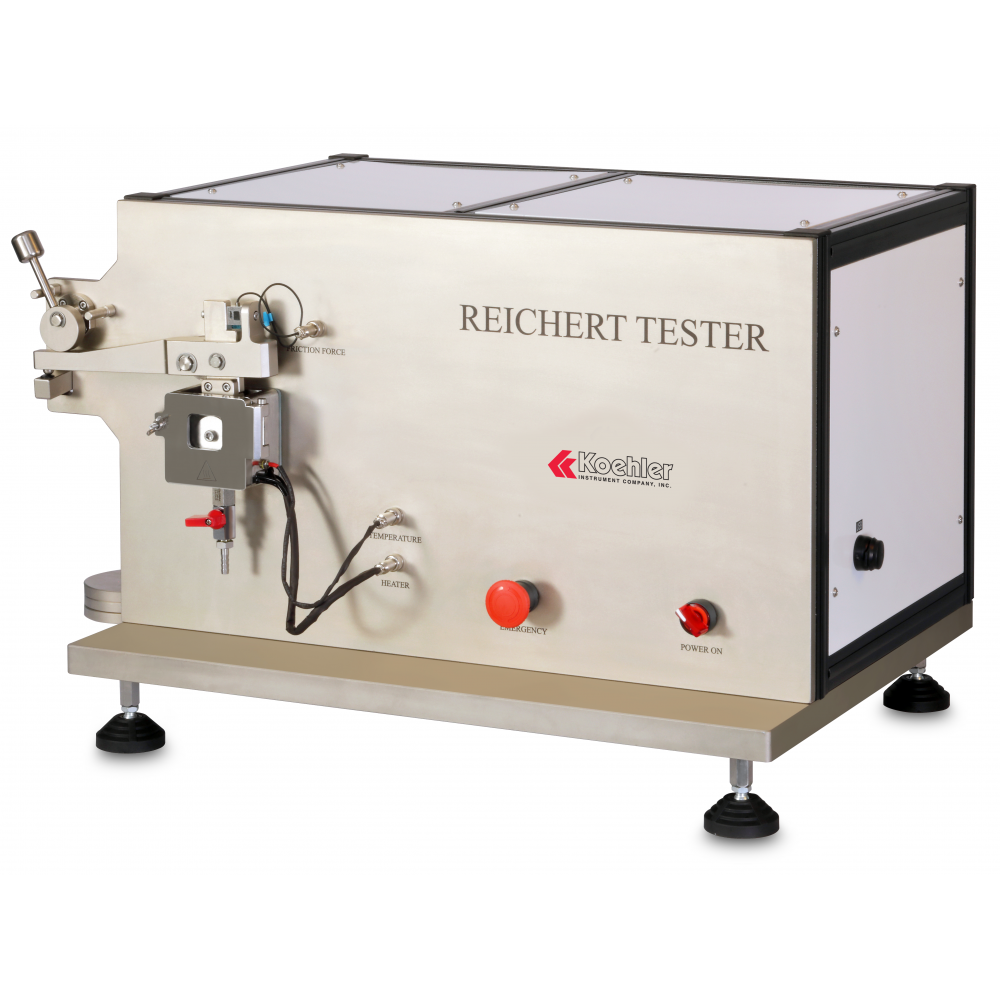Reichert Tester
This Reichert test method covers the procedure for determining wear properties (WP) and extreme pressure properties (EP) to evaluate lubricant and additives.
This test rig consists of rigidly mounted test roller (cylinder) pressed against a friction wheel which is in cross-cylinder contact configuration. The friction wheel is partially submerged in the lubricant bath under test. In this test, rig loading is applied through dead weights. Normal load and frictional force are measured through dual measurement load cell. A contact type acoustic emission detector is incorporated for scratching noise from the contact. The lubricant chamber contains a heater and controls lubricant temperature from ambient to set value. Online data acquisition software acquires the normal load, frictional force, coefficient of friction, sound level, temperature of the oil bath, and sliding distance and analyzes & compares the test. In addition, Koehler will provide an optical microscope with CCD camera-based image acquisition system software to measure wear scar area, which is done by measuring the major axis and minor axis of the scar for calculation of scar diameter.
- Data Acquisition Software - CD
- Optical Microscope with CCD camera based image acquisition system software to view the scar on PC ( PC is not under our scope of supply).
- Dial Gauge
- Test Rolls
(i) Brass - Qty – 25
(ii) Copper - Qty – 25
(iii) Aluminum - Qty – 25
(iv) Bearing Steel - Qty – 25
(v) Friction Wheel (bearing steel) - Qty – 25
Frictional Force -
up to 500N
RPM - up to 1500 rpm (continuously variable through AC Frequency drive)
Temperature - Ambient to 120C
Temperature Sensor - RTD
Sliding Speed - 0.85 to 2.50 m/s
Friction Wheel Dia - 35 mm
Test Roller - 12 mm dia x 18 mm length
Preset Timer - 99hrs:59min:59sec
Acoustic Sensor - To measure noise level 10 μ least count
Dial indicator - 10 mm range to measure the radial wear
Sample volume - 25 mL approx.


